🎹 Classification
Forest Classification Based on different Parameters, Forest Types
Based on Age
Even Aged Forest

- Even-aged forests, also called regular forests are those consisting of even - aged woods.
- Even - aged wood means trees of approximately the same age. True even - aged forests can be only man-made forests.
- In case of forests, which regenerate naturally, some age difference is often allowed.
- Differences up to 25 % of the rotation are usually allowed in cases where forest is not harvested for 100 years or more.
Un-Even Aged Forests

- A forest is called uneven aged or irregular when trees vary widely in age.
- Applied to a stand in which individual stem vary widely in age i.e., age difference more than 25 % of the rotation.
Based on Composition
Pure Forests
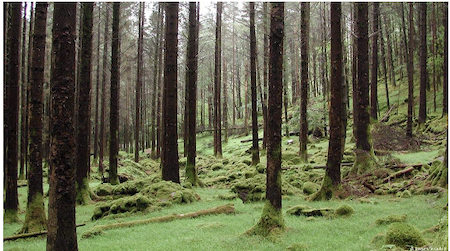
- Pure forests are composed almost entirely of one species, usually to the extent of not less than 80 per cent.
Mixed Forests
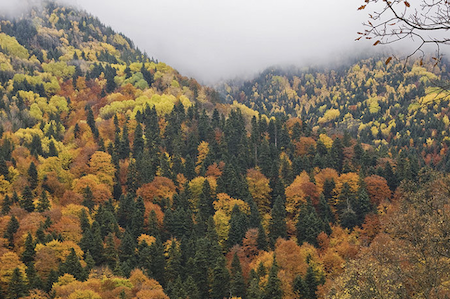
- Mixed forests are defined as forest composed of trees of two or more species intermingled in the same canopy.
Based of Regeneration
High Forest

- When regeneration is obtained from seed.
Coppice Forest
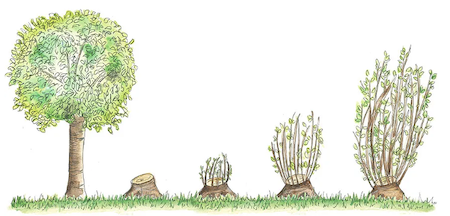
- A forest regenerated by some vegetative methods like coppice, root suckers, ratoons, etc., is called coppice forest. It is also known as a ’low’ forest.
Natural Forest
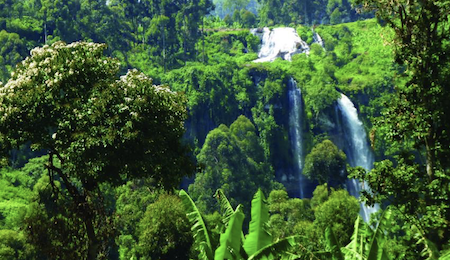
- When the regeneration is obtained naturally, the forests are called natural forests.
Man Made Forest
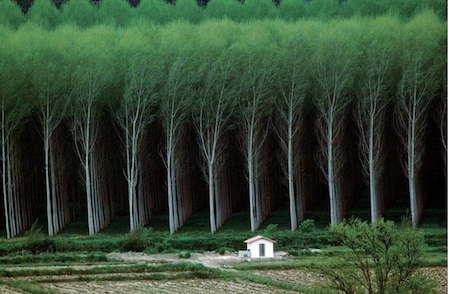
- When it is obtained artificially, the forests are called Man-made forests or Plantations.
Based on Management
Protection Forests
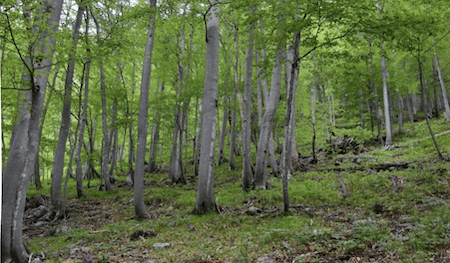
- Protection forests are those which are managed primarily for ameliorating climate, checking soil erosion and floods, conserving soil and water, regulating stream flow and increasing water yields and exerting other beneficial influences.
Production Forests

- Production forests are those which are managed primarily for their produce.
- It is also sometimes referred to as national forest, i.e., a forest which is maintained and managed to meet the needs of the defense, communication, industry, and other general purposes of public importance’.
Farm forest
- Forest raised on farms and its adjoining area either as individual scattered trees or a collection of trees to meet the requirement of fuel and fodder of the farmers and to have a beneficial influence on agriculture.
Fuel forest
- Forest raised on village waste land to supply fuel, small timber, fodder, etc., to the village communities living far away from Government forest.
Recreational forest
- Forest which is managed only to meet the recreational needs of the urban and rural population.

Based on Ownership & legal Status
Government/State Forests
- State forest is a ‘forest owned by state’. On the basis of legal status, state forests are further classified as:
Reserved Forests
- A Reserved forest is an area with complete protection, constituted according to
Chapter IIof the Indian Forests Act. 1927. - Hint: Just like you reserve a seat in train, no body can seat on your seat.

Protected Forests
- A Protected forest is an area subject to limited degree of protection constituted under the provisions of
Chapter IVof the Indian Forest Act, 1927.
Village Forests
- A Village forest is a state forest assigned to a village community under the provisions of
Chapter IIIof Indian Forest Act, 1927.
Communal forest
- Forest owned and generally managed by a community such as a village, town, tribal authority or local government, the members of which share the produce’.
Panchayat forest
- Any forest where management is vested in a village panchayat (i.e., a body of men elected by the villagers from among themselves for specific administrative or other purposes pertaining to the village)’.
Private Forests
- Forests owned by Corporations, Panchayats, Societies and other Agencies.
Unclassed forest
- Forest land owned by Government but not constituted in to a reserved, village or protected forest.
Based on Growing Stock
Normal Forest
- A Normal forest is an ideal forest with regard to growing stock, age class distribution and increment and from which the annual or periodic removal of produce equals to the increment and can be
continued indefinitelywithout endangering future yields. - Annual/periodic removal of forest production is equal to its increment.
Abnormal Forest
- Abnormal forest is one which is not normal, i.e. growing stock, age, class, distribution of stems, increment, etc. are either in excess or more usually in deficit than the normal forest.
A/Q to National Forest Policy, 1952
- National Forest Policy of 1952, recommended that on the basis of functions, all forest lands may be classified into:
Current forest policy is of 1988, this classification is not in use.
- a. Protection Forests
- b. National Forest
- c. Village Forests
- d. Tree Land
National Commission of Agriculture (NCA), 1976
- NCA proposed that forests can be classified into:
Protection Forests
- The practices of managing the forests for their protection function are called Protection forestry.
- In protection forestry, the object is to protect the site due to instability of terrain, nature of soil, geological formations, etc.
- Such areas where manipulation of the forest cover is not desirable may be classed as protection forests.
- The forests located on higher hill slopes, national parks and sanctuaries, preservation plots, biosphere or nature reserves and wilderness areas may be included under protection forests.
- The practice of forestry with a view to conserving flora, fauna, soil and water, increasing water yields, reducing floods and droughts, amelioration of climatic conditions, etc. is called Protection Forestry.
Production Forests
- The practice of forestry with object of producing maximum quantity of timber, fuel wood and other forest produce is called Production Forestry.
Social Forests
- Social Forestry is the practice of forestry which aims at meeting the requirement of rural and urban population.
- The object of social forestry is to meet the basic needs of community aiming at bettering the conditions of living through:
- Meeting the fuel wood, fodder and small timber requirements
- Protection of agricultural fields against wind
- Meeting recreational needs and
- Maximizing production and increasing farm returns
Forests Types of India
Champion and Seth(1967) classified forests of India into 5 major groups and further it is classified into 16 type groups/ groups- [🤔 Final and best classification which is adopted by government. Just have basic idea about it.]

Major Groups
- Tropical Forests
- Montane Subtropical Forests
- Montane Temperate Forests
- Sub-alpine Forests
- Alpine scrub
Type Groups
A. Tropical Forests: This group has seven group type such as:

-
- Wet Evergreen Forest
-
- Semi-evergreen Forest
-
- Moist Deciduous Forest
-
- Littoral and Swamp Forest
-
- Dry Deciduous Forest
-
- Thorn Forest
-
- Dry Evergreen Forest
B. Montane Subtropical Forests: This group has three group type:

-
- Broad-leaved Hill Forest
-
- Pine Forest
-
- Dry Evergreen Forest
C. Montane Temperate Forests: This group has three group type:

-
- Montane Wet Temperate Forest
-
- Himalayan Temperate Forest
-
- Himalayan Dry Temperate Forest
D. Sub-alpine Forests:

-
- Sub-alpine Forest
E. Alpine Scrub: This group has two group type:

-
- Moist Alpine Scrub
-
- Dry Alpine Scrub
Based on Age
Even Aged Forest

- Even-aged forests, also called regular forests are those consisting of even - aged woods.
- Even - aged wood means trees of approximately the same age. True even - aged forests can be only man-made forests.
- In case of forests, which regenerate naturally, some age difference is often allowed.
- Differences up to 25 % of the rotation are usually allowed in cases where forest is not harvested for 100 years or more.
Un-Even Aged Forests

- A forest is called uneven aged or irregular when trees vary widely in age.
- Applied to a stand in which individual stem vary widely in age i.e., age difference more than 25 % of the rotation.
Based on Composition
Pure Forests

- Pure forests are composed almost entirely of one species, usually to the extent of not less than …
Become Successful With AgriDots
Learn the essential skills for getting a seat in the Exam with
🦄 You are a pro member!
Only use this page if purchasing a gift or enterprise account
Plan
Rs
- Unlimited access to PRO courses
- Quizzes with hand-picked meme prizes
- Invite to private Discord chat
- Free Sticker emailed
Lifetime
Rs
1,499
once
- All PRO-tier benefits
- Single payment, lifetime access
- 4,200 bonus xp points
- Next Level
T-shirt shipped worldwide

Yo! You just found a 20% discount using 👉 EASTEREGG

High-quality fitted cotton shirt produced by Next Level Apparel